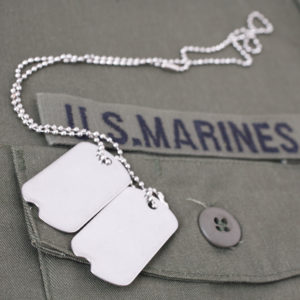Dept. of Justice Outlines Option to Settle Camp Lejeune Lawsuits More Quickly
The court was provided details about a Camp Lejeune settlement "Elective Option", which lists the types of injuries and times of exposure which will govern how much claimants may be compensated for due to water contamination

The U.S. government has filed a notice to inform judges presiding over all Camp Lejeune water contamination lawsuits of a new “Elective Option”, detailing the voluntary process that will allow individuals to quickly settle claims involving certain injuries linked to toxic chemicals that contaminated water at the North Carolina military base.
The Department of Justice and U.S. Navy first announced the elective Camp Lejeune settlement option on September 7, offering up to $550,000 to veterans and their families if they suffered specific medical conditions, including kidney cancer, liver cancer, non-Hodgkins lymphoma, leukemias, bladder cancer, multiple myeloma, Parkinson’s disease, kidney disease and systemic sclerosis.
The government hopes the option to settle Camp Lejeune lawsuits quickly will help resolve a large portion of the nearly 100,000 claims that have already been presented under a new law that went into effect last year.
The Camp Lejeune Justice Act (CJLA) of 2022 opened a two-year window for lawsuits to be filed by individuals injured by contaminated water on the base between the mid-1950s and late-1980s. However, the size and scope of the litigation is expected to continue to increase over the coming year, and it is widely expected that the litigation will become the largest mass tort in U.S. history by the time the filing window closes in August 2024.
The sprawling litigation involves dozens of different injuries allegedly caused by chemicals known to have contaminated water at Camp Lejeune, including various types of cancer, Parkinson’s disease, birth defects and other injuries, each of which plaintiffs must establish was at least as likely as not to have been caused by exposure to water on the base.

Stay Up-to-Date About
AboutLawsuits.com sends a weekly digest email with information about recalls, lawsuits and warnings that may impact your family, which will include any new Camp Lejeune lawsuit updates or developments.
"*" indicates required fields
Over the past year, the Navy and DOJ have faced sharp criticism over failing to settle Camp Lejeune claims promptly, following reports that indicated no agreements had been reached, even though the law required each claimant to wait 180 days after submitting notice of their claim before filing a lawsuit. The administrative period was intended to allow the U.S. government time to resolve claims, but there has been no visible effort to achieve those goals.
The federal government provided a notice (PDF) to the Court on September 7, formerly notifying the judges in the U.S. District Court for the Eastern District of North Carolina about the elective option and providing details about the settlement opportunity.
Camp Lejeune Settlement Offer Details
The Camp Lejeune Elective Option will provide settlements ranging from about $100,000 to $550,000, for individuals who suffered specific types of cancer and diseases that have been identified as potentially linked to Camp Lejeune drinking water contamination by the Agency for Toxic Substances and Disease Registry.
Those who take the Elective Option being offered by the government would be divided into two tiers of qualifying injuries.
Tier 1 includes those injuries backed by evidence of a causal link between one or more contaminants found at Camp Lejeune, including:
- Kidney Cancer
- Liver Cancer
- Non-Hodgkin’s Lymphoma
- Leukemias
- Bladder Cancer
Tier 2 includes injuries where there is enough research to support a link between a contaminant and the injury, but not enough to firmly conclude there is a causal link, including:
- Multiple Myeloma
- Parkinson’s Disease
- Kidney Disease/End Stage Renal Disease
- Systemic Sclerosis/Systemic Scleroderma
The two tiers will be further divided into categories based on how long they were exposed to water at the military base, with claimants receiving a larger reward based on how long they were exposed to water at the base, and which tier of injury they experienced.
Tier 1 Qualifying Injuries will receive $150,000 if they lived or worked on the base between 30 days and a year, $300,000 for one to five years of exposure, and $450,000 if they lived or worked at Camp Lejeune for longer than five years.
Tier 2 Qualifying injuries will get $100,000 for a month to a year of exposure, $250,000 for one to five years, and $400,000 for more than five years.
Camp Lejeune Elective Option Requirements
In addition to the qualifications applied to all Camp Lejeune lawsuit plaintiffs, those who wish to participate in the elective option must properly present an administrative claim to the Department of the Navy. Their injury must have been first diagnosed or treated before August 10, 2022.
To qualify for the Elective Option, the claimant’s diagnosis must have occurred at least two years after their first exposure to Camp Lejeune water, and no longer than 35 years after they were last exposed.
They must also have the appropriate medical documentation showing their diagnosis or treatment, and there must be evidence that they resided or were employed at Camp Lejeune for at least 30 days between August 1, 1953 and December 31, 1987.
Plaintiffs Who Don’t Qualify for Elective Option May Still File Claims
The Department of Justice notes that claimants who do not qualify because they have not suffered those specific injuries, or for other reasons, may still file a claim and seek relief from the U.S. Navy. The government noted that there may be additional Camp Lejeune settlement frameworks introduced in the future, as the officials continues to look at the scientific evidence, and as the litigation develops.
The Elective Option was proposed just days after parties in the litigation submitted competing Camp Lejeune trial and discovery plans to begin preparing the first bellwether test cases for trial.
While the outcome of the early Camp Lejeune bellwether trials would not have a binding impact on other claims, the amount of any lawsuit payouts awarded may help the parties determine how juries will respond in future cases and facilitate settlement negotiations for different categories of injuries.






0 Comments